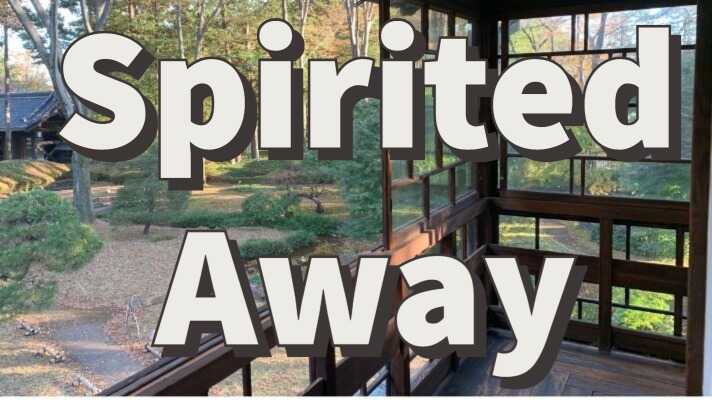Spirited Away (Sen to Chihiro no Kamikakushi:千と千尋の神隠し)is a 2001 Japanese animated fantasy film written and directed by Hayao Miyazaki, animated by Studio Ghibli. In Japanese folklore, spirited away, or Kamikakushi (神隠し) refers to the mysterious disappearance or death of a person, after they had angered the gods (kami). Here you can learn Japanese language and culture through Spirited Away. I will introduce the synopsis of Spirited Away, Japanese vocabulary, and the places that served as models for the film. Finally, animism and Shintoism in Spirited Away will be explained.
Spirited Away: Synopsis・ Japanese Vocabulary・Model Locations
I will begin by introducing the synopsis, Japanese vocabulary, and model locations for Spirited Away.
In the Car
The story starts with ten-year-old girl Chihiro, who had to move due to her parents’ work, moodily slouching in the back seat of her parents’ car. Chihiro had to move due to her parents’ work, drove to her new home with them, feeling anxious about her future life.
- もうすぐ mousugu
- almost there.
- 買い物 かいもの kaimono
- shopping
- 学校 がっこう gakkkou
- school
- お母さん おかあさん okaasann
- mother
- お花 おはな ohana
- flower
- 花束 はなたば hanataba
- bouquet
- お誕生日 おたんじょうび otannjoubi
- birthday
- 窓 まど mado
- window
- 開ける あける akeru
- open
- 家 いえ ie
- house
What is 祠(ほこら)hokora?

Hokora is a small place where gods and ancestors are worshipped.
Around the Tunnel
They got lost and found a tunnel. Chihiro thought the tunnel was suspicious, but her parents were curious and went through the tunnel together.
- 新しい あたらしい atarasii
- new
- 建物 たてもの tatemono
- building
- 門 もん monn
- gate
- 鍵 かぎ kagi
- key
- お父さん おとうさん otousann
- father
- 川 かわ kawa
- river
Crossing Corridor of Sekizenkan
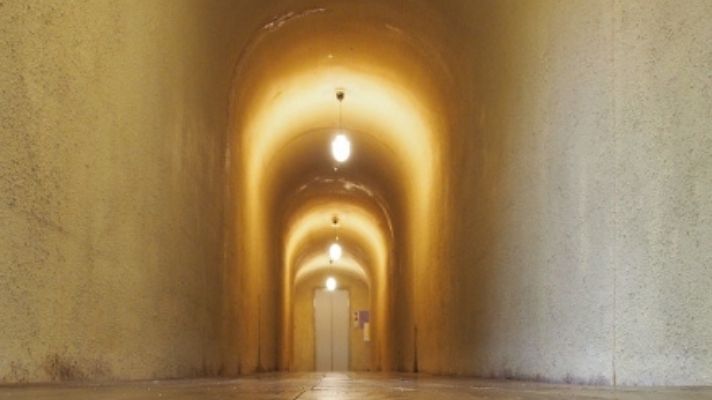
According to the staff, Hayao Miyazaki stayed at Sekizenkan Ryokan prior to making Spirited Away. Maybe Sekizenkan Ryokan is one of the the model locations. Sekizenkan Ryokan sits in the middle of Shima Onsen, which name (四万温泉) means “The 40,000 Hot Spring,” since it was believed that bathing in the local waters could cure 40,000 different diseases. Shima Onsen is located in Gunma Prefecture, northwest of Tokyo. Part of the corridor of Sekizenkan is a tunnel. Rumor has it that this place resembles the tunnel used to exit the real world at the beginning of Spirited Away.
Restaurant Street
At the end of the tunnel, there is a downtown area with delicious looking food, but no one is in sight. Her parents were attracted by the delicious looking food and started eating on their own.
- 食べ物屋 たべものや tabemonoya
- restaurant
- 誰もいないね。だれもいないね。 daremoinaine
- There’s nobody here.
- どなたかいませんか。donatakaimasenka
- Is anybody here?
Kagiya (Edo-Tokyo Open Air Architectural Museum)
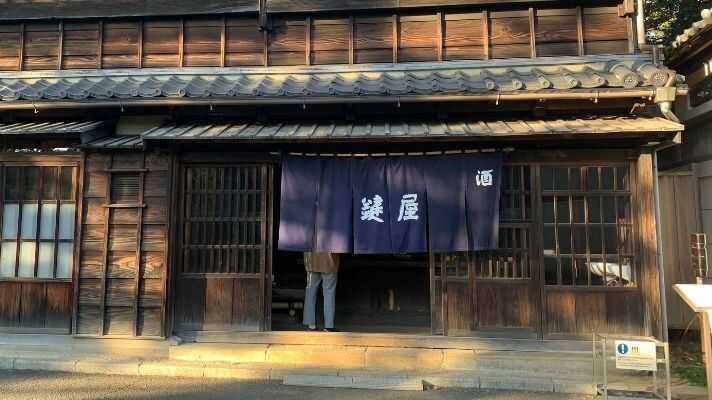
Edo Tokyo Tatemono-en (Edo-Tokyo Open Air Architectural Museum) in Koganei City, Tokyo, was the location that director Miyazaki used as a reference when he conceived Spirited Away. In 1993, the Tokyo Metropolitan Government established Edo-Tokyo Open Air Architectural Museum. This museum aims to relocate, reconstruct, preserve, and exhibit historical buildings of great cultural value that are impossible to preserve at their original location. Kagiya is said to be the model for the place where Chihiro’s parents ate a mountain of food and turned into pigs. Kagiya was an Izakaya bar located in Taito Ward, Tokyo, and opened at the end of the Edo period. Izakaya is a Japanese-style drinking establishment where you can enjoy drinks and food at reasonable prices.
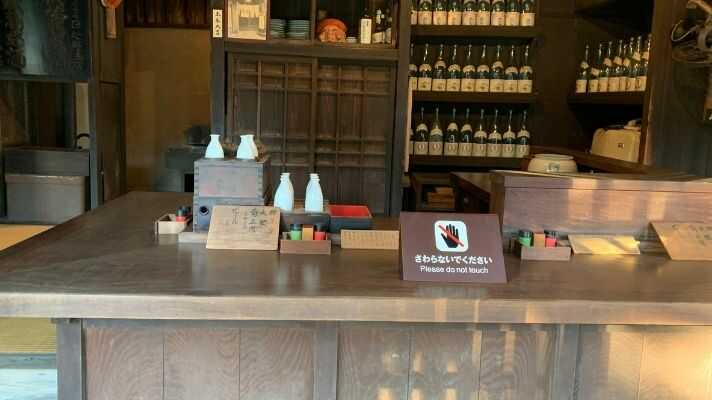
Encounter with Haku
Chihiro decides to leave her parents and look around town. There she meets a mysterious boy named Haku. Haku tells Chihiro that she should not stay here, and Chihiro has no choice but to return to her parents. However, her parents have taken the form of pigs. Haku appears before Chihiro and recommends that she work at a public bathhouse in order to survive here.
- 電車 でんしゃ dennsha
- train
- 水 みず mizu
- water
- 怖がるな。こわがるな kowagaruna
- Don’t be afraid.
な (na). Meaning: don’t ~ (order somebody to not do something).
食べるな。 たべるな taberuna
- 口を開けて。くちをあけて kuchiwoakete
- Open your mouth.
Command form (Imperative form) of Japanese (when you ask someone to do something)
- Verb て ( = te)(casual)verb-te form ~て ( = te)
Open the window.
窓を開けて。まどをあけて。madowoakete - (polite) 下さい ( = ください = kudasai)
Please open the window.
窓を開けてください。まどをあけてください。madowoaketekudasai - (more polite) いただけますか ( = itadakemasu ka?)
Could you open the window?
窓を開けていただけますか。まどをあけていただけますか。madowoaketeitadakemasuka
- 豚 ぶた buta
- pig
- 橋 はし hasi
- bridge
Kasuga-sama
Kasuga-sama, a masked deity whose lower body is transparent, come to the bathhouse in a boat. They are characterized by walking while floating in the air. Kasuga-sama is modeled after the masks used in the bugaku (舞楽)performed at Kasuga Taisha Shrine. Kasuga Taisha Shrine is Nara’s most celebrated shrine. It was established in 768 and rebuilt several times over the centuries. Bugaku refers to dances and their accompanying music originating from the Korean peninsula and mainland China, and developed during the Heian period (794-1192).
【1日】
— 春日大社 kasugataisha shrine (@KASUGASHRINE) July 1, 2022
毎月1・11・21日と1のつく日に行われるお祭り #旬祭 が斎行されました。春日大神様へ皇室のご安泰、国家の繁栄と国民の隆昌を祈ります。
危険な暑さと言われるほどの猛暑日が続いておりますので、お体に気を付けてお過ごしください。#春日大社 #奈良 #神事 #神楽 pic.twitter.com/sLm989u76l
Sekizenkan Ryokan (Shima Onsen )
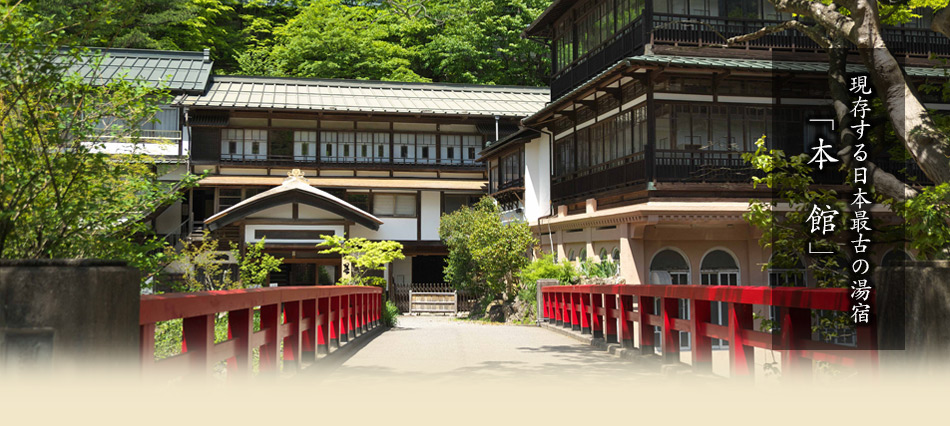
Sekizenkan Ryokan in Shima Onsen, Gunma Prefecture, is said to have served as the model for “Spirited Away. The red bridge in front of the ryokan is called “Keiun Bridge(慶雲橋).” Sekizenkan is Japan’s oldest wooden bathhouse building.
Kajika Bridge (Ikaho Onsen)
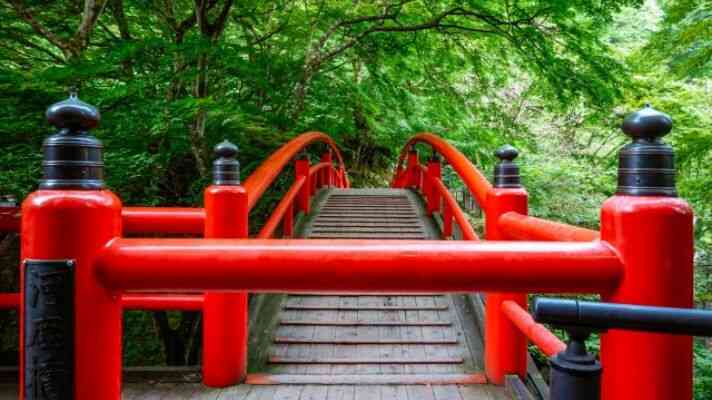
Some people say Kajika Bridge is a model location of the red bridge in Spirited Away. Kajika Bridge is located among the forest in the area south of the Ikaho Onsen town in Gunma Prefecture, northwest of Tokyo. The Ikaho Onsen is a small old-fashioned area with traditional restaurants and shops lining the streets.
Encounter with Kamaji
Chihiro visits the boiler room of a public bathhouse on Haku’s instructions. Chihiro persistently asks Kamaji, the boiler room manager, to let her work there. Kamaji, flattered by Chihiro’s enthusiasm, asks Lynn, who works at the bathhouse, to show Chihiro around.
- すみません。sumimasenn
- Excuse me.
- ごめんなさい。gomennnasai
- I’m sorry.
- じゃまじゃま! jamajama
- Out of the way.
- 仕事 しごと sigoto
- work
- 孫 まご mago
- grandchildren
Whether male or female grandchildren, we are called まご in Japanese. There is no gender distinction.
- 鼻 はな hana
- nose
- 匂う におう niou
- smell
Takei Sanseido (Edo-Tokyo Open Air Architectural Museum)

Takei Sanseido, a stationery store in Edo-Tokyo Open Air Architectural Museum, served as the model for Kamaji’s workplace. This stationery store was established in the early Meiji era. It was originally a wholesaler of calligraphy supplies, but later changed to a retail store.
Yubaba’s Room and Room where Sen and Lynn Sleep
Chihiro meets Yubaba and asks her for a job. Yubaba tries to scare Chihiro off. However, Chihiro is determined and insists that she really needs a job. Bound by the rules of the spirits’ world, Yubaba gives her a contract. In exchange, Yubaba takes Chihiro’s name away and renames her “Sen” to keep her in service at the bathhouse.
- おいで。oide
- Come
- 働く はたらく hataraku
- work
- どうしたの? dousitano
- What’s wrong?
- 名前 なまえ namae
- name
- 契約 けいやく keiyaku
- contract
- 部屋 へや heya
- room
What’s Yaoyorozu no kamisama (八百万の神様)?
In Yubabazu’ room, Yubaba said “Yaorozu no kamisama” . What’s Yaoyorozu no kami sama (八百万の神様)? Yaoyorozu literally means 8 million in Japanese, which means a large number or countless. Although the term literally means 8 million gods, this is not an exact figure—”eight million” here simply means “countlessly many”. Kami(sama) means god. So Yaoyorozu no kami sama(八百万の神様)means countless gods. Gods can be both good and evil. Also, Gods have a wide range of personality. In Shintoism, we consider everything in our world has its own god: a god in a mountain, in a river, in a tree, and even in food.
Kotodama(言霊)
In Japanese tradition, words are thought to have a spiritual power, which is called kotodama(言霊). According to this belief, when certain words are spoken, their hidden power can affect the real world in a variety of ways. In Spirited Away, the characteristics of this mysterious world were that those who did not work could not live, and that power resided in words. If you said even one word of “no” or “I want to go home,” you would either be extinguished, or you would be turned into a chicken. But if instead they said, “I will work here,” even the witches could not ignore them. The power of words means that they carry irrevocable weight when uttered. Yubaba used the power of words to create order in the world she ruled. She also took away the names of those under her rule. Chihiro was also deprived of her name and was named Sen. Since name is the basis of existence, to lose it is to lose one’s self. Yubaba thus gained complete control over her opponent.
Korekiyo Takahashi residence (Edo-Tokyo Open Air Architectural Museum)
The model for where Sen spends his time outside of work is the Korekiyo Takahashi (高橋 是清) residence in Edo-Tokyo Open Air Architectural Museum. Takahashi Korekiyo was a Japanese politician who served as a member of the House of Peers, as Prime Minister of Japan from 1921 to 1922, and as the head of the Bank of Japan and Ministry of Finance. His attempts to curb military spending were resented by the military, and in the February 26 Incident, he was assassinated by a young rebel officer who shot him six times in the chest.
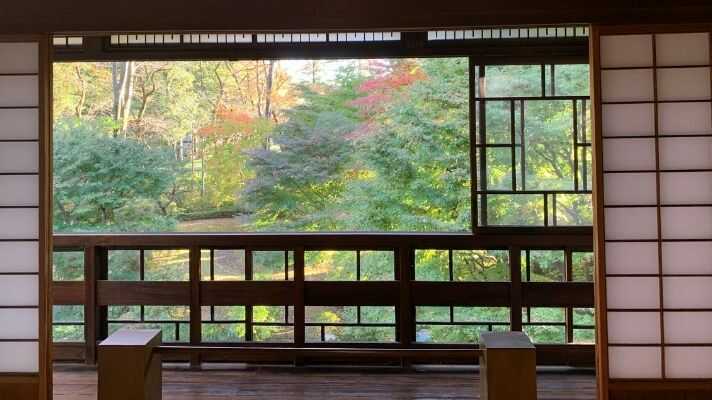
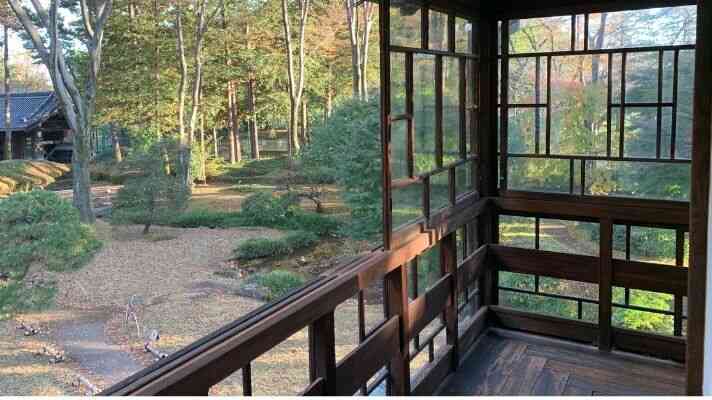
Going to the Pig Pen with Haku
After a secret meeting with Haku, Sen met her parents, who were transformed into pigs and put into a pig farm. Shocked by their changed appearance, Sen involuntarily burst into tears. After having Haku return the clothes she originally wore, Sen looks at the business card in her pocket and remembers that her name is “Chihiro.
- 靴 くつ kutu
- shoes
- おいで。oide
- Follow me.
- 本当の ほんとうの honntouno
- real
- ごめんなさい。 gomennnasai
- Sorry.
Working at the Bathhouse
Chihiro returns to work and manages to get to work despite her screw ups. When Chihiro comes to dump the water, she discovers a mysterious creature, Kaonashi, outside the window. Mistaking it for a customer, Chihiro pulls Kaonashi into the bathroom. From then on, Kaonashi appears to Chihiro every time something happens and helps her out. A troublesome stinker, Kusaregami, comes to the hot-spring house. Chihiro is forcibly ordered by Yubaba to take care of Kusaregami by herself. Chihiro struggles, but tries her best to entertain the guests. The guest was thought to be a kusaregami, but he was a well-known river god. The river god gives Chihiro dumplings as a token of his gratitude, and also leaves a large amount of gold sand at the bathhouse.
- 雨 あめ ame
- rain
- おはようございます。ohayougozaimasu
- Good morning!
- 手 て te
- hand
- ありがとうございます。arigatougozaimasu
- Thank you!
- くさい kusai
- stinky
「四の五の言う」means to complain about this or that.
- 窓 まど mado
- window
- 壁 かべ kabe
- wall
- 自転車 じてんしゃ jitennsha
- bicycle
Dogo Onsen Honkan
The design of the Aburaya(油屋)contains various hot springs and there is no specific model, but it is officially stated that Kodakarayu and Dogo Onsen Honkan were the reference locations.
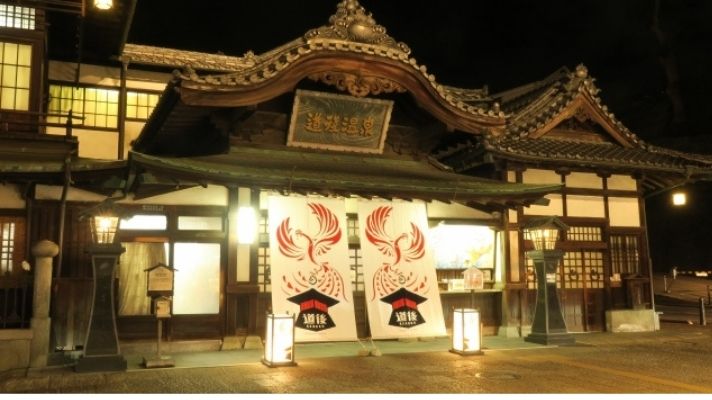
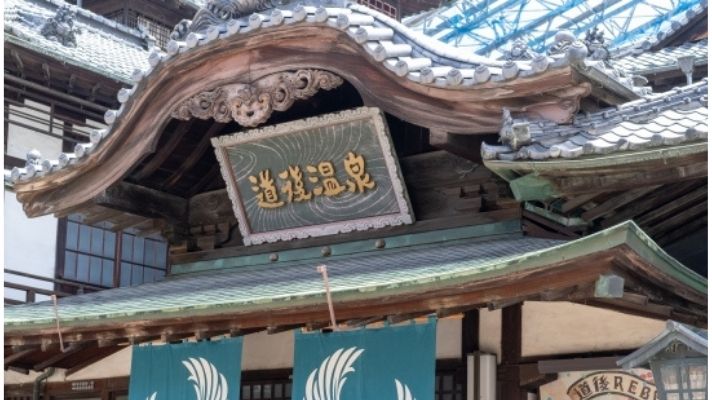
Dogo Onsen Honkan is the symbol of Dogo Onsen. Dogo Onsen is a hot spring in Matsuyama City, Ehime Prefecture, Shikoku. It is said to be one of the three oldest hot springs in Japan. Its existence has been known since ancient times and is even mentioned in the Manyoshu, the oldest anthology of Japanese poetry.
Dogo Onsen Honkan was first public bathhouse in Japan to be designated as a National Important Cultural Property in 1994, but it has remained in operation as a public bathhouse without being turned into a museum. It was awarded the highest rating of three stars in the Michelin Green Guide Japon published in 2009. The present-day Honkan is a 3-story wooden structure renovated in 1894 by Yukiya Isaniwa(佐庭如矢), the first mayor of Dogo Yunomachi. The Dogo Onsen Honkan has two bathing areas, the Tama-no-Yu and Kami-no-Yu.
The “three oldest hot springs in Japan” (日本三古湯:にほんさんことう:nihonnsannkotou)are Dogo Onsen (Ehime Prefecture), Arima Onsen (Hyogo Prefecture), and Shirahama Onsen (Wakayama Prefecture). These hot springs have such a long history(Nara period:710-794) that they appear in “Nihonshoki” (Chronicles of Japan)
Kodakara-yu (Edo-Tokyo Open Air Architectural Museum)
The official website of Studio Ghibli refers to Kodakara-yu as ‘strongly inspired from’ to create the anime film Spirited Away. Kodakara-yu was built in 1929 at Senju-motomachi, Adachi Ward as a public bathhouse. It run until 1988. You can see Kodakara-yu in Edo-Tokyo Open Air Architectural Museum.
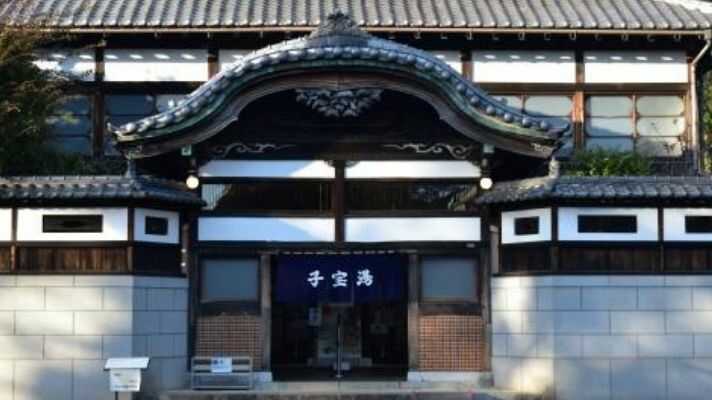

What is the difference between a hot spring (onsen:温泉)and a public bath(sento:銭湯)?
Onsen is hot water or gas that gushes from nature as defined by Article 2 of the Onsen Law. In contrast, a sento is a public bathhouse that rents hot water and charges money for it. In other words, a hot spring (onsen) has hot spring “water” in the bathtub, but a bathhouse (sento) does not necessarily have hot spring “water” in it. Most sento do not contain hot spring water, but only regular hot water.
To learn more about Japanese public bathhouses, watch the video below.
Kaonashi Scattering Gold Sand
Kaonashi scatters gold sand and orders the employees to bring in large quantities of food. Meanwhile, Sen witnesses a wounded dragon being chased by a piece of paper in the shape of a bird. Sen intuits that the dragon is Haku. The dragon jumped into the bed of Sen and the others and managed to escape the attack, but eventually headed for Yubaba’s room. Sen heads to Yubaba’ room in pursuit of the dragon, but on the way he encounters Kaonashi, who has turned into a giant. Kaonashi tries to please Sen by giving him a large lump of gold, but Sen refuses to accept it. Disappointed, Kaonasi eats the employees around him, and the others run away.
- 海 うみ umi
- sea/ocean
- 金 きん kin
- gold
- 竜 りゅう ryuu
- dragon
- 紙 かみ kami
- paper
- 笑う わらう warau
- smile

This cute piggy bank is on sale.
Hyakudan Kaidan in Hotel Gajoen Tokyo
The “Hyakudan Kaidan” in Hotel Gajoen Tokyo is said to have served as the model for the interior of Aburaya in Spirited Away.
Hyakudan Kaidan is the common name for Meguro Gajoen Building No. 3, the predecessor of Hotel Gajoen Tokyo, a wooden structure built in 1935. A long stair corridor of 99 steps connects the seven rooms where meals and celebrations were held. Hyakudan Kaidan was designated a Tangible Cultural Property of Japan in 2001 and a Tangible Cultural Property of Tokyo in 2009. The reason for 99 steps instead of 100 is that odd numbers are good luck, and missing one step can lead to further development.
Encounter with Zeniba
A figure resembling Yubaba appears from the paper bird attached to Sen’s clothes. Her name is Zeniba, Yubaba’s twin sister. She says she has been chasing Haku, who stole her precious seal on Yubaba’s orders. Haku, in dragon form, falls into a hole in the floor with Sen and ends up in the boiler room where Kamaji is. When Sen feeds Haku the bitter dumplings given by the river god, Haku spits out from his body the seal he stole from Zeniba’s place and the black mass that had damaged Haku’s body.
おんも (onnmo) is an infant word referring to the outside of the house.
- あなた病気なの? あなたびょうきなの? anatabyoukinano
- Are you sick?
- 遊ぶ あそぶ asobu
- play
- あなたは誰? あなたはだれ? anatahadare
- Who are you?
- 双子 ふたご futago
- twin
- 飲み込む のみこむ nomikomu
- swallow
「えんがちょ切った」(enngachokitta)
Engacho is an ancient Japanese (from the Heian period) spell to ward off defilement, performed by overlapping the index and middle fingers. 「えんがちょ切った」 is to protect oneself by marking an “engacho” when one comes into contact with something unclean or impure, and to detach from it by having a third party cut it for you. Engacho in this movie is a method of making a circle with the thumbs and forefingers of both hands and the other party (kama-ji) cuts the circle from above with a hand knife.
えんがちょ切った٩(๑❛ᴗ❛๑)۶💕💕🐳 pic.twitter.com/aEDkIPdki8
— ゆみ٩(๑❛ᴗ❛๑)۶ (@TfiSZlh37H3YL53) August 19, 2018
This is White Dragon (Haku) pillow.
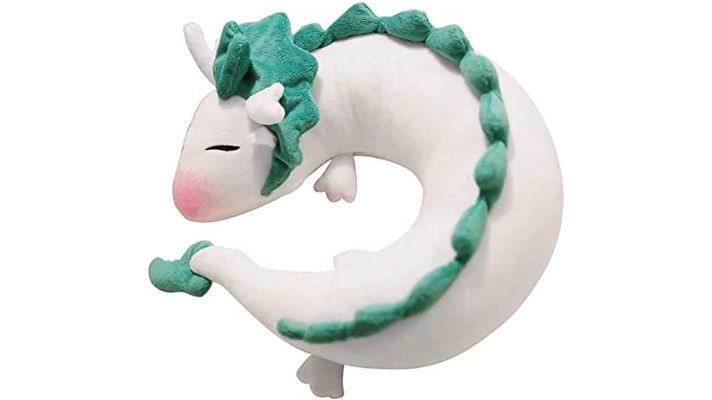
Click here⇒ Anime Neck Pillow White Dragon Plush Doll Toy Kids Travel Neck Pillow
Going to Zeniba’s House
Kaonashi chases after Sen to eat him. While chasing after her, Kaonashi spits out the bathhouse workers and the blue frogs, then returns to her original size and boards the train with Sen.
- ねずみ nezumi
- rat
- どこ doko
- where
- さびしいsabisii
- lonely
- 駅 えき eki
- station
Shimonada Station (下灘駅)
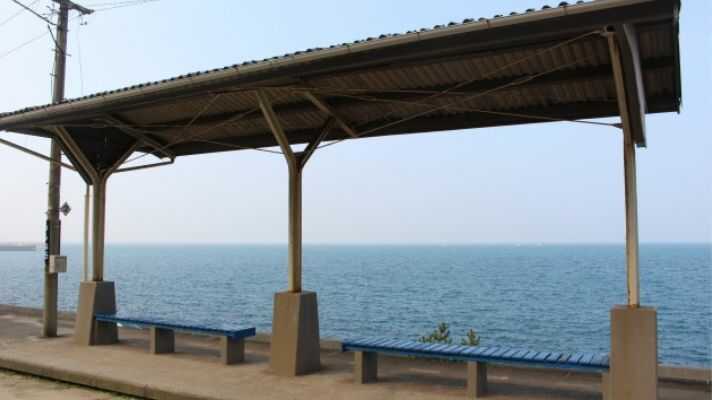
Chihiro goes on a train whose railroad continues into the sea, which is Shimonada Station. Station on the JR Yosan Line in Ehime prefecture is known as the station closest to the sea. About a 15-minute walk away from Shimonada Station, you will find a railroad that continues into the sea.
Streetcar: Toden 7500 Type (Edo-Tokyo Open Air Architectural Museum)
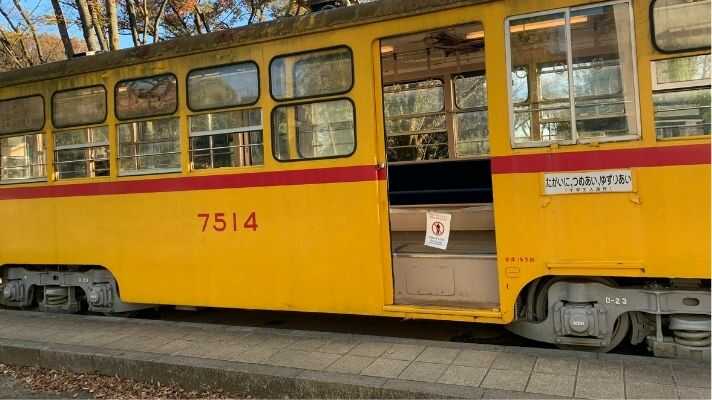
The model of the train that went with Kaonashi to “Numa no Soko Station” is the “Toden 7500” in Edo-Tokyo Open Air Architectural Museum. The Toden 7500 started in front of Shibuya Station and ran toward Shimbashi, Hamacho, Nakanobashi, and Kanda. Streetcars other than the Arakawa Line were phased out beginning in 1972 due to the rapid increase in traffic.
In the Zeniba’s House
Arriving at their destination station, Chihiro and his friends arrive safely at Zeniba’s house. Zeniba kindly invites Chihiro and the others into her house and receives a stamp that no longer has the magic to kill those who steal from her. Chihiro apologizes, saying that it was her fault for stepping on the mysterious black creature. Chihiro receives a hair clip from Zeniba and ties her hair with it. Then, Haku, in the form of a dragon, comes to pick her up.
- おはいり。ohairi
- Come in.
- 虫 むし musi
- bug
Kaonashi learns knitting from Zeniba, and ends up staying with her. Hayao Miyazaki has stated that Kaonashi exist in everyone’s heart. In other words, the true nature of Kaonashi can be thought of as the weak part of the human heart. We are lonely because they have no place to stay, and we are anxious because we have no meaning to our existence. We don’t even know who we are. We can’t speak well in our own language, and we don’t really understand people’s hearts. We don’t know what to do when people reject you. Maybe you feel sad when you see Kaonashi because it more or less overlaps with you. In the end, Kaonashi finds a restful life with Zeniba. This ending can be taken as a message that there is a place for everyone.

Returning to the Original World
Sen and Haku return to Aburaya. Yubaba says that in order to return to the original world, Sen must find their parents among the pigs. Sen correctly answers, “They are not here. Promising to meet Haku again, Sen heads for the entrance tunnel and meets his parents in human form. Her parents remember nothing, and the three return through the tunnel to their car.
- 約束 やくそく yakusoku
- promise
- 決まり きまり kimari
- rule
- おばあちゃん obaachann
- grandmother
- みんなありがとう!! minnnaarigatou
- Thank you everyone.
Animism and Shinto in Spirited Away
The mysterious city on the other side of the tunnel in “Spirited Away” is apparently the world of the gods. In “Spirited Away,” a myriad of deities appear, representing the world of Animism and Shinto. It is noteworthy that these gods do not seem to be given much importance. The river god who came in covered in sludge and returned purified by Sen seems very important, but the other gods seem to be ordinary people, even if they are gods. They are mostly a group. This perception of the gods is part of the Japanese tradition. Of course, some deities are considered very important, such as the Sun Goddess Amaterasu (the deity of the emperor’s family). However, most deities are familiar to the average Japanese. In other words, the boundary between gods and people was loose.
Animism is the belief that everything that exists in the world is alive and has a soul. This “all things” includes rocks, mountains, rivers, and other things that are not generally considered alive. Animism tends to be regarded as a primitive belief system.
On the other hand, Shinto means “the way of the gods” and is a traditional Japanese religion that emphasizes nature. Because of the many similarities between Shinto and animism, many consider Shinto to be a form of animism. Shinto has no founder and no sacred scriptures such as the sutras or the Bible. Shinto deities are called “kami. They are sacred spirits in the form of things and concepts that are important for life, such as wind, rain, mountains, trees, rivers, and fertility.
A shrine is a ritual facility for the worship (“enshrining”) of one or more deities based on Shinto beliefs. This video tells us what to do at the Shrine.
Humans also become kami when they die. Kami of extraordinary figures are also sometimes enshrined in shrines. For example, Toshogu Shrine(東照宮, Tōshōgū) is a magnificent shrine dedicated to Tokugawa Ieyasu, the founder of the Tokugawa Shogunate, which ruled Japan for over 250 years until 1868.
Mythology Behind Spirited Away
Myths are stories that explain natural objects, natural phenomena, peoples, cultures, and civilizations as events linked to supernatural and metaphysical beings such as gods or cultural heroes at the time the world began, and that explain the origin of various phenomena and the reasons for their existence. This video explains the mythology behind Spirited Away.
Several gods appears in Spirited Away.
Kasuga-sama
Kasuga-sama, a masked deity whose lower body is transparent, come to the bathhouse in a boat. They are characterized by walking while floating in the air. Kasuga-sama is modeled after the masks used in the bugaku (舞楽)performed at Kasuga Taisha Shrine.
Oshira-sama
Oshira-sama is the god who grows two radish-like protuberances in a beard-like position and goes with Chihiro to where Yubaba is. The reason why he looks like a radish is that Oshira-sama is worshipped as the guardian deity of sericulture, agriculture, and horses. Although worshiped mainly in the Tohoku region, there are also shrines dedicated to Oshira-sama in Ibaraki and Shizuoka prefectures, and he seems to be cherished throughout the country.
River God
The guest was thought to be a kusaregami, but he was a well-known river god. Haku, who helps Chihiro, is also the river god. Just as Chihiro was named “Sen,” Haku was deprived of his true name, but he had forgotten it and could not remember who he was. In fact, Chihiro once fell into the Kohaku River when she was a child, and Haku saved her, reminding him through Chihiro that his name is Nigihayamikohakunushi.

Conclusion
Spirited Away is a wonderful movie. Through “Spirited Away,” you can also learn about the Japanese language and culture. To learn more about the director of “Spirited Away,” Hayao Miyazaki, watch these videos below.
